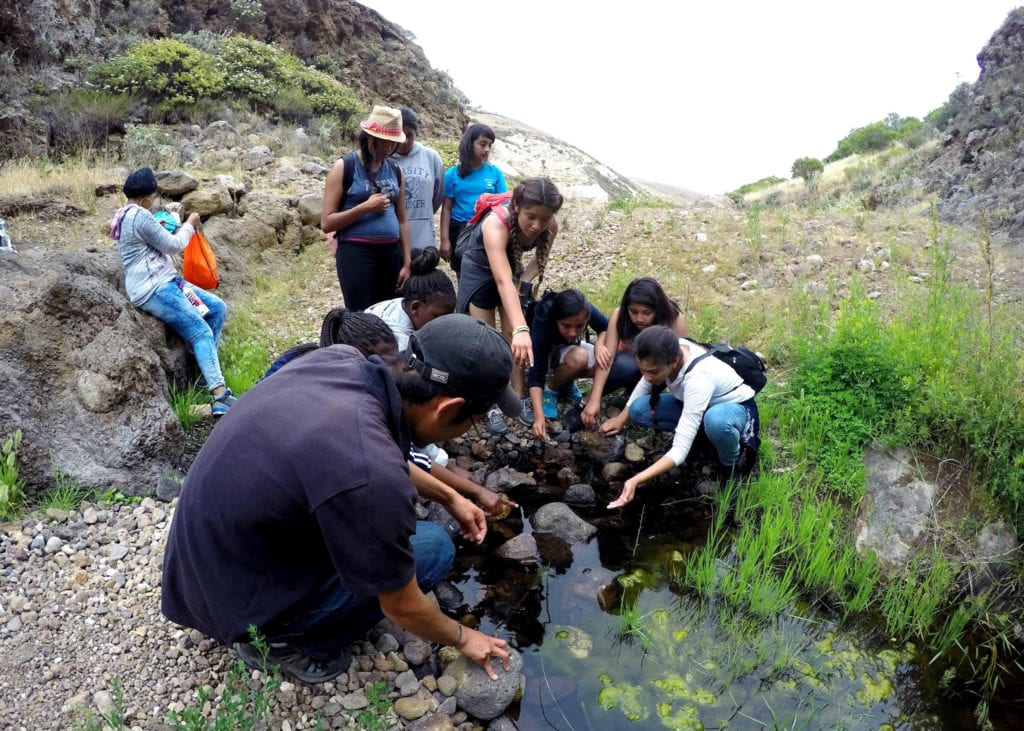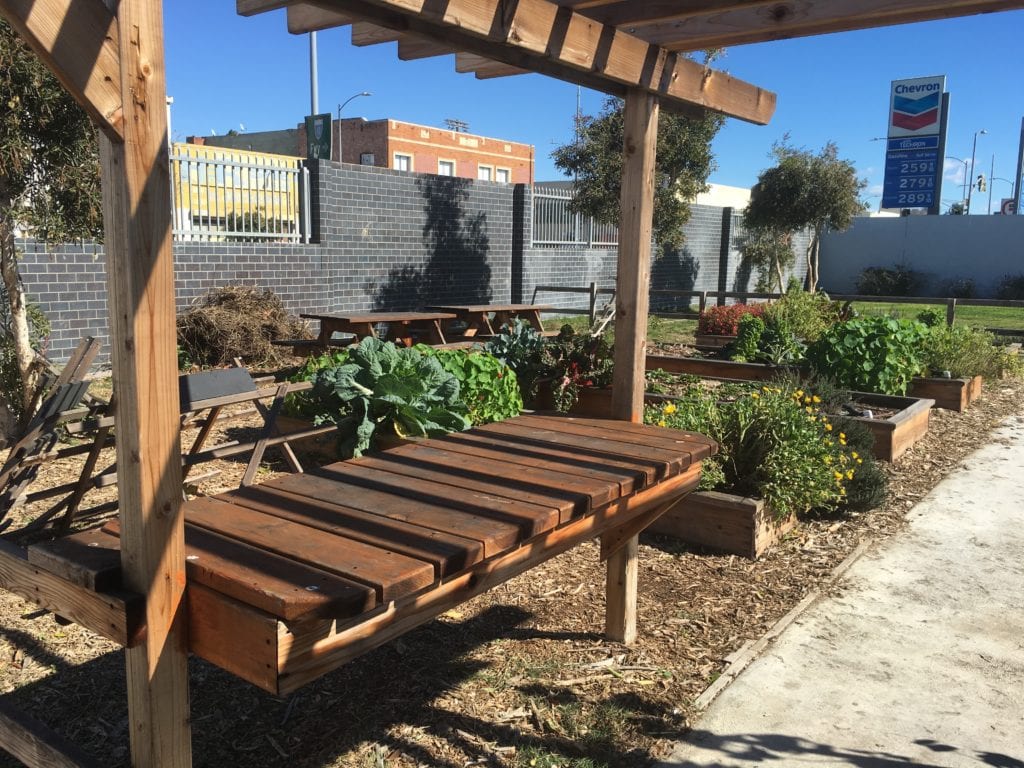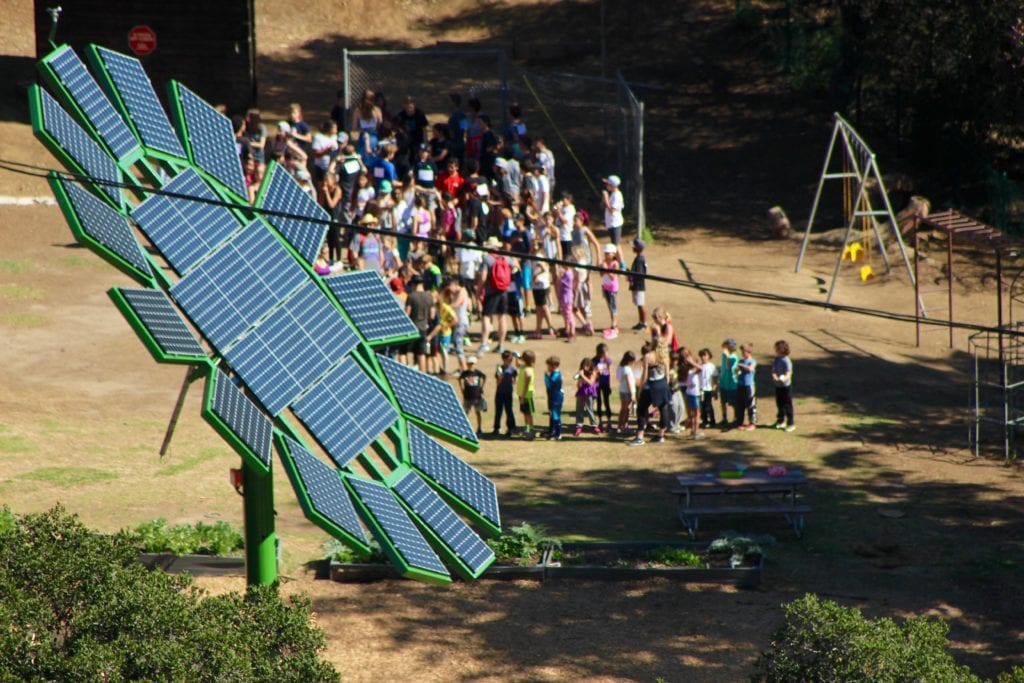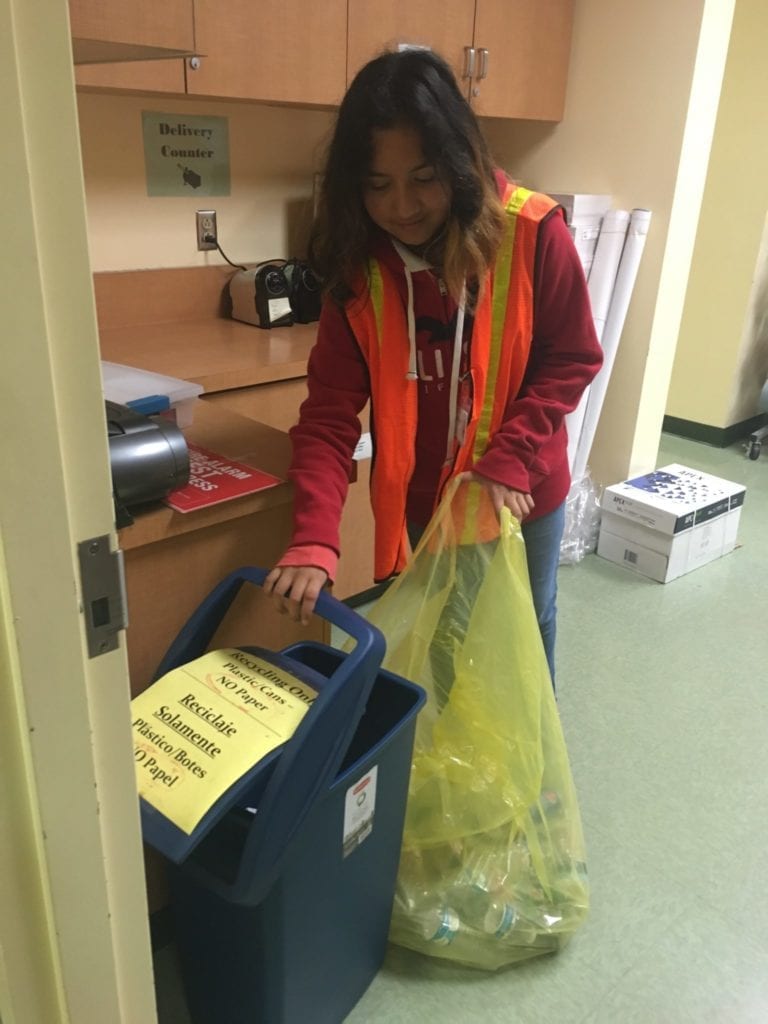
Something amazing caught the eye of Madeleine Gygli, principal of the Carson-Gore Academy of Environmental Studies, while she was walking on the schoolyard one day. It’s something many other principals would love to see. Several third graders were sauntering through a grassy play area picking up trash and sorting it to be discarded or recycled. And nobody asked them to do it. “They were taking ownership of the environment that they actually are in while at the school,” Gygli says.
Kids picking up garbage and recycling it of their own ac-cord? What kind of magic is this? Many parents struggle to simply convince kids to pick up their clothes and toys from their bedroom floors. But Gygli says such conscientiousness is part of Carson-Gore’s mission to focus on sustainability and incorporate it into the school’s curriculum.
Make room, reading, writing and arithmetic. Sustainability is becoming an important part of the curricula of many L.A.-area schools. Add this to the normal course of study, and students learn the importance of environmental issues ranging from sustainable living to environmental science and environmental justice. It’s all part of a broader goal. Teaching students to care for the planet is seen as a way schools can collectively help meet aggressive goals for carbon-emissions reduction and other United Nations Sustainable Development Goals by 2030.
Sustainability is key in classrooms in the South Bay, too. The Hermosa Beach City School District was among more than two dozen school districts this year honored with California Green Ribbon Schools awards. These awards, presented by the state Department of Education, laud schools for conservation of resources and health and environmental literacy.
Research shows it’s not just the planet that wins when schools focus on sustainability. Kids do, too. A Stanford University analysis of 119 research pa-pers on environmental education found profound benefits ranging from more effective learning to environmentally friendly behavior and academic skills. Why? Kids naturally are interested in their environment, so applying lessons to it brings learning alive and makes it applicable to daily life. All told, 98 percent of the studies Stanford reviewed showed positive effects from environmental education.
Gardens growing at Carson-Gore

Carson-Gore Academy remains a testament to the movement. The nearly 9-year-old school, located west of down- town Los Angeles, is named after former U.S. Vice President Al Gore, known for his work on environmental causes. The school’s other namesake is the late environmental champion Rachel Carson, best known for her groundbreaking 1962 book “Silent Spring.” The school was built with sustainability in mind from the very beginning. “We are an academy that focuses on environmentalism,” Gygli says.
A well-kept and actively monitored garden is the centerpiece of Carson-Gore’s approach. The school works with EnrichLA, a local organization that has helped build 135 gardens at local schools and conducts gardening programs at 91 schools a week. EnrichLA comes to Carson-Gore weekly and teaches six-week sessions on everything from edible gardens to irrigation-system repair. The lessons are conducted by grade level. Kindergarteners, for instance, learn about parts of the seed and how flowers grow. Older children learn about soil conservation. “That helps tie in the science and the whole content that our teachers are already teaching,” Gygli says. And while students aren’t graded on how environmentally conscious their behavior is, it’s part of the science and health units.
Solar energy at MUSE

Over in Calabasas, sustainability is completely interwoven at MUSE School. Not only do students learn about the importance of green living in the classroom, they live it. That goes for the school’s buildings and the food it serves, too. The kitchen uses solar lights and 90 percent of the campus’s energy comes from solar. All the food served in the kitchen is plant based. In 2014, MUSE School boosted the amount of food it grows on campus, not only as a living garden for students, but also to cut its reliance on trucking in materials.
The connection between sustainability in the curriculum and sustainable practices in the way the school is managed keeps things real for students. At MUSE School, sustainability isn’t an add-on feature, and the school community – 205 students in kindergarten to 12th grade and their parents – is passionate about it. This incorporation of students’ passions, including sustainability, is the driving force behind the MUSE curriculum. “By incorporating students’ passions and interests into daily academics, we make learning more engaging and fun,” says Matt Cordish, director of marketing and admissions, who has been with MUSE for more than three years.
MUSE built its own grade-level goals to align with the California state standards, and sustainability is encouraged throughout. “Our students have options in and out of the classroom,” Cordish says. For instance, MUSE School offers a seed-to-table program where students not only learn how agriculture affects the environment, but also how to prepare plant-based meals.
This unique focus also offers families a flexible alter-native to the regimented curricula that can sometimes be found in more traditional school settings. “The school went this direction because MUSE School’s founder saw the excitement and shine leave her children in traditional school settings,” Cordish says. “Suzy Amis Cameron wanted an environment for all children to be celebrated as creative and independent thinkers.
“Parents and teachers both benefit from our curriculum because both see their students as a whole,” Cordish continues. “We provide every family with a narrative blueprint on their children’s academic, social and emotional growth twice a year. Parents see a difference in their student at home, and teachers see the unlimited growth potential in the class-room.”
Social justice at Environmental Charter

Far from the rustic canyons of Calabasas, Tashanda Giles-Jones is adding sustainability to a more urban environment. Giles-Jones is one of the Green Ambassadors teachers at Environmental Charter Schools, a network of free public schools in South L.A. that operates campuses in Inglewood, Lawndale and Gardena. Giles-Jones teaches at the Ingle-wood campus. Green Ambassadors Institute is the learning lab at the school and coordinates the sustainable living practices at the system’s network of schools.
The school arrived at sustainability as a core part of the curriculum through its focus on social justice, Giles-Jones says. While working in the community with social justice issues, students “realized that the majority of that work was pertaining to environment and how their ecosystems were,” she explains.
Several sustainable living programs have been added to the school since it was founded in 2013. These range from a sustainable food program where students grow their own organic food to a “living stream” filled with fish for hands-on science lessons. “For us, sustainability is ingrained in the way that we operate the school, where all the campuses are looking at how they are managing their waste,” Giles-Jones says. “We compost at every one of our meals.”
When the school makes sustainable upgrades to the facilities, those are treated as teaching moments for the students. “We look at how we’re shaping our buildings, planting trees on the southern side. So, as they grow they’re acting more as a natural air conditioning,” Giles-Jones says. “As we incorporate these changes, we’re building them into what we’re teaching the kids, into the curriculum and in lessons so that they understand the academics behind it as well as getting the skill set of how to maintain it or build it.”
Green space and partnerships at LAUSD

Even the second-largest school district in the U.S. is focusing on the importance of sustainability. Los Angeles Unified School District, which includes more than 900 schools and 187 public charter schools, aims for ecology goals such as:
- Increasing campus green space, school gardens and outdoor learning spaces;
- Increasing permeable surfaces to encourage groundwater infiltration;
- Reducing the heat-island effect caused by urban land surfaces; and
- Raising awareness of environmental stewardship and urban habitat.
In June 2013, its board of education approved the Sustainable Environment Enhancement Development for Schools (SEEDS). The bond-funded program offers a total of $5 million to be distributed equally among the local districts to help create or improve existing school greening projects.
To help raise environmental awareness and teach sustainability to its 700,000-plus students, LAUSD has teamed up with partners, including TreePeople, the Los Angeles Audubon society, People for Parks Los Angeles, the Theodore Payne Foundation and the National Wildlife Foundation.
So far, more than 300 LAUSD campuses have gardens or agricultural areas and more than 150 schools have edible teaching gardens. The district also boasts 26 schoolyard habitats that create or restore wildlife habitat on school grounds and are certified by the National Wildlife Federation. Schoolyard Habitats feature outdoor classrooms where educators and students learn how to attract and support local wildlife.
These experiences plant seeds in a number of ways. “Providing an educational experience such as ours can completely change a student’s outlook on school,” says MUSE School’s Cordish. And beyond the campus, environmental lessons can change the way our children view their lives and their futures.
Matt Krantz is an L.A.-based writer whose work has appeared in USA Today and L.A. Weekly.


























